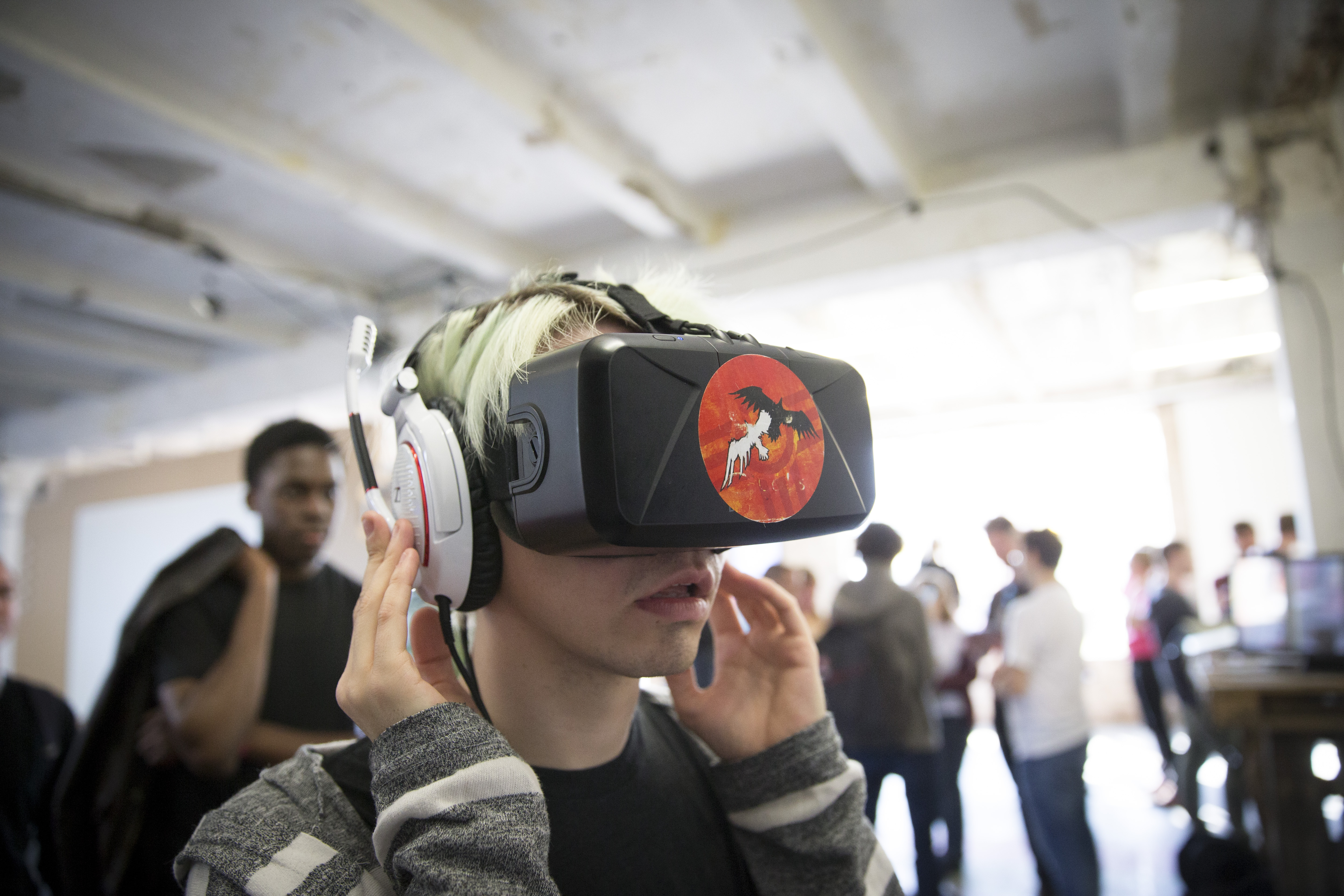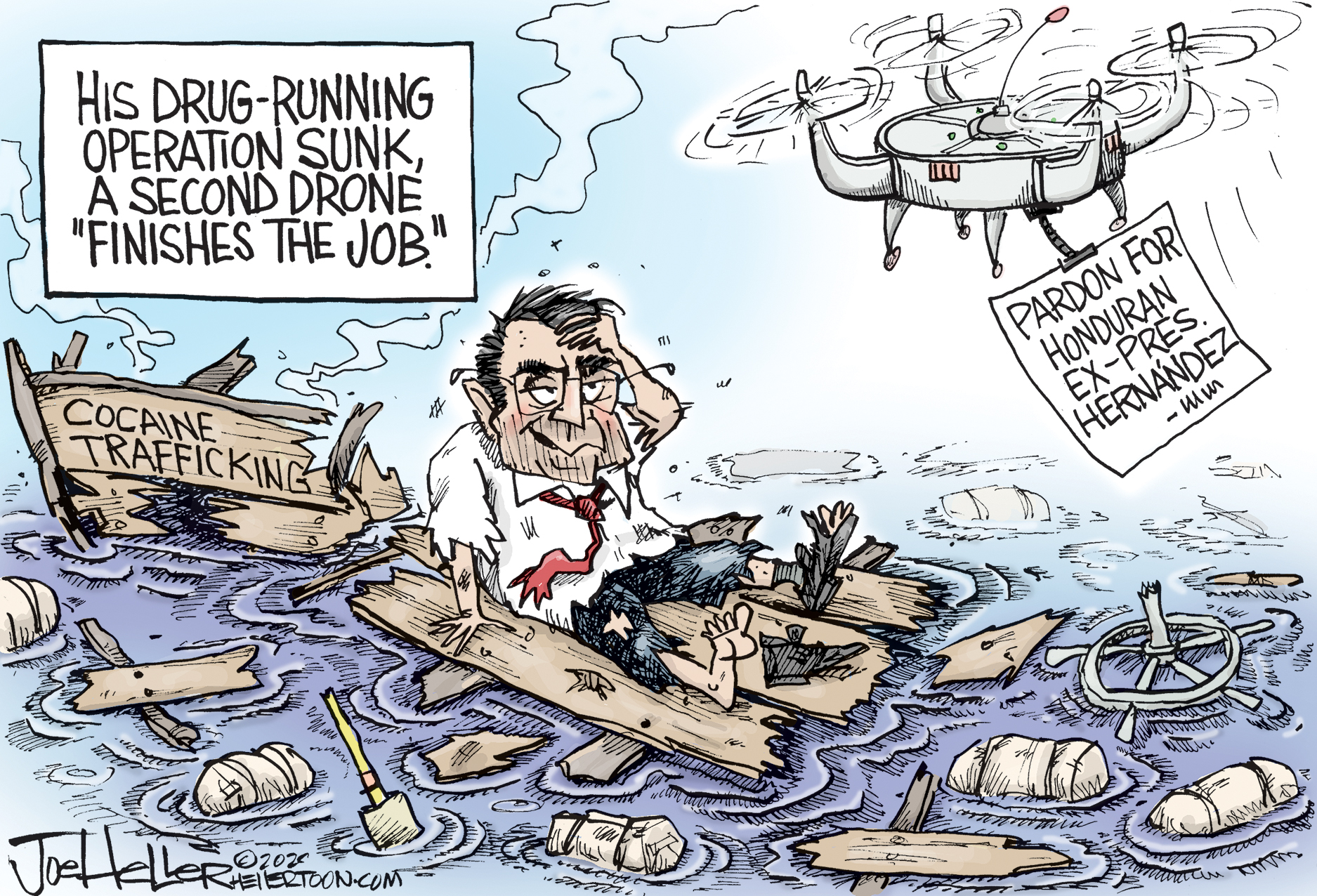6 innovative uses for virtual reality
From The Idea Factory, our special report on innovation


Last year, Facebook bought Oculus Rift, a leader in virtual reality technology, for $2 billion. "This is just the start," Facebook CEO Mark Zuckerberg wrote in a blog post. "We're going to make Oculus a platform for many other experiences. Imagine enjoying a courtside seat at a game, studying in a classroom of students and teachers all over the world, or consulting with a doctor face-to-face — just by putting on goggles in your home."
Indeed, the possibilities for virtual reality are tantalizing. But we don't have to wait for the social media giant to make them possible. Already, VR is being used in innovative ways to make our lives a little bit easier.
1. Training football players
The Week
Escape your echo chamber. Get the facts behind the news, plus analysis from multiple perspectives.

Sign up for The Week's Free Newsletters
From our morning news briefing to a weekly Good News Newsletter, get the best of The Week delivered directly to your inbox.
From our morning news briefing to a weekly Good News Newsletter, get the best of The Week delivered directly to your inbox.
Earlier this month, the Dallas Cowboys announced a two-year deal with StriVR Labs, a tech company specializing in VR platforms to help train sports teams. The Cowboys' quarterbacks will train with a headset that allows them to watch plays from a first-person perspective and help them make snap decisions. The program was tested at Stanford University and partially credited for boosting the team's performance. "When you're just watching film, you don't get the sound, you don't get that real-life feel of the game," Stanford quarterback Kevin Hogan told Fox Sports. "With this, I can see what the structure is." After using the VR headset before games, Hogan was completing 10 percent more passes, and the team boosted its average game score from 24 to 38. Already Cowboys backup quarterback Brandon Weeden says the VR practice is "invaluable."
2. Rehabilitating stroke patients
One of the biggest challenges following a stroke can be regaining the use of any affected limbs. One pilot study from researchers in Spain suggests virtual reality can help. Using a Microsoft Kinect sensor, patients control a virtual body whose movements correspond to their own. When the patients reach for a virtual object, researchers enhance the accuracy of the projection without the patient's knowledge. By "tricking" their brains into believing the affected arm is more accurate than it actually is, the VR experience made it more likely patients would actually use their weaker arm. "This therapy could create a virtuous circle of recovery, in which positive feedback, spontaneous arm use, and motor performance can reinforce each other," said Belen Rubio from the Laboratory of Synthetic, Perceptive, Emotive and Cognitive Systems at Pompeu Fabra University in Spain.
3. Treating PTSD
A free daily email with the biggest news stories of the day – and the best features from TheWeek.com
Some clinics already use virtual reality exposure therapy to help soldiers recover from post traumatic stress disorder. A headset transports them to a war zone where they are met with bomb explosions, loud noises, and wartime sights reflecting their own personal experiences. As the soldier is repeatedly exposed to the traumatic stimuli, his brain begins to replace fear with familiarity. "I was angry, I was stressed. I tried a lot of things, but when I tried virtual reality it was like a toxic release," war veteran Chris Merkle told the Wall Street Journal. "You're not just talking to a therapist on a couch. You're in that event, you're reliving those moments." VR therapy could also help victims of assault, sexual violence, car accidents, and other traumatizing events.
4. Preparing public speakers
According to one Gallup poll, 40 percent of Americans are afraid of public speaking. Yet most of us will inevitably have to give a speech in our lifetimes. Some people are turning to VR programs to reduce their stage fright. One app for Oculus Rift puts you in a virtual room packed with people waiting eagerly to hear you speak. Users can adjust the audience size and attitude. Bloomberg already has its own public speaking simulator for internal use. If a speaker spends too much time talking to one side of the room, or inserts too many "ums" and "you knows", the app will let them know.
5. Taking a jury to a crime scene
Forensic researchers want to bring virtual reality to the courtroom, using it as a tool for reconstructing crime scenes for jurors. "Imagine you could transport the entire jury, the judge, the litigators — everybody — back to the crime scene during the crime," says Jeremy Bailenson of the Virtual Human Interaction Lab at Stanford University in California. "That would be the best thing possible for any trial." VR could also be used in testimony. "Both sides might have one that they show to the jury," explains Carrie Leonetti, an associate professor of constitutional law, criminal procedure, and evidence at the University of Oregon School of Law. "Imagine a trial where somebody is charged with homicide, and their defense is self-defense. Each side would have a virtual environment that would look really different."
6. Teaching dental students
Nobody wants to be a guinea pig for dental students in training. Thanks to virtual reality, dental students can make all their mistakes on a virtual patient. One program, called the Virtual Dental Implant Training Simulation Program, walks students through an entire procedure, from administering anesthesia to choosing the right drill size. Virtual patients even come with different personalities and medical histories. "It's anytime, anywhere education — a classroom without walls," says Dr. Roman Cibirka of the Medical College of Georgia. The program is very realistic, Dr. Cibirka says. "If the student doesn't place anesthesia in the right spot, the patient screams."
Jessica Hullinger is a writer and former deputy editor of The Week Digital. Originally from the American Midwest, she completed a degree in journalism at Indiana University Bloomington before relocating to New York City, where she pursued a career in media. After joining The Week as an intern in 2010, she served as the title’s audience development manager, senior editor and deputy editor, as well as a regular guest on “The Week Unwrapped” podcast. Her writing has featured in other publications including Popular Science, Fast Company, Fortune, and Self magazine, and she loves covering science and climate-related issues.
-
 Political cartoons for December 6
Political cartoons for December 6Cartoons Saturday’s political cartoons include a pardon for Hernandez, word of the year, and more
-
 Pakistan: Trump’s ‘favourite field marshal’ takes charge
Pakistan: Trump’s ‘favourite field marshal’ takes chargeIn the Spotlight Asim Munir’s control over all three branches of Pakistan’s military gives him ‘sweeping powers’ – and almost unlimited freedom to use them
-
 Codeword: December 6, 2025
Codeword: December 6, 2025The daily codeword puzzle from The Week
